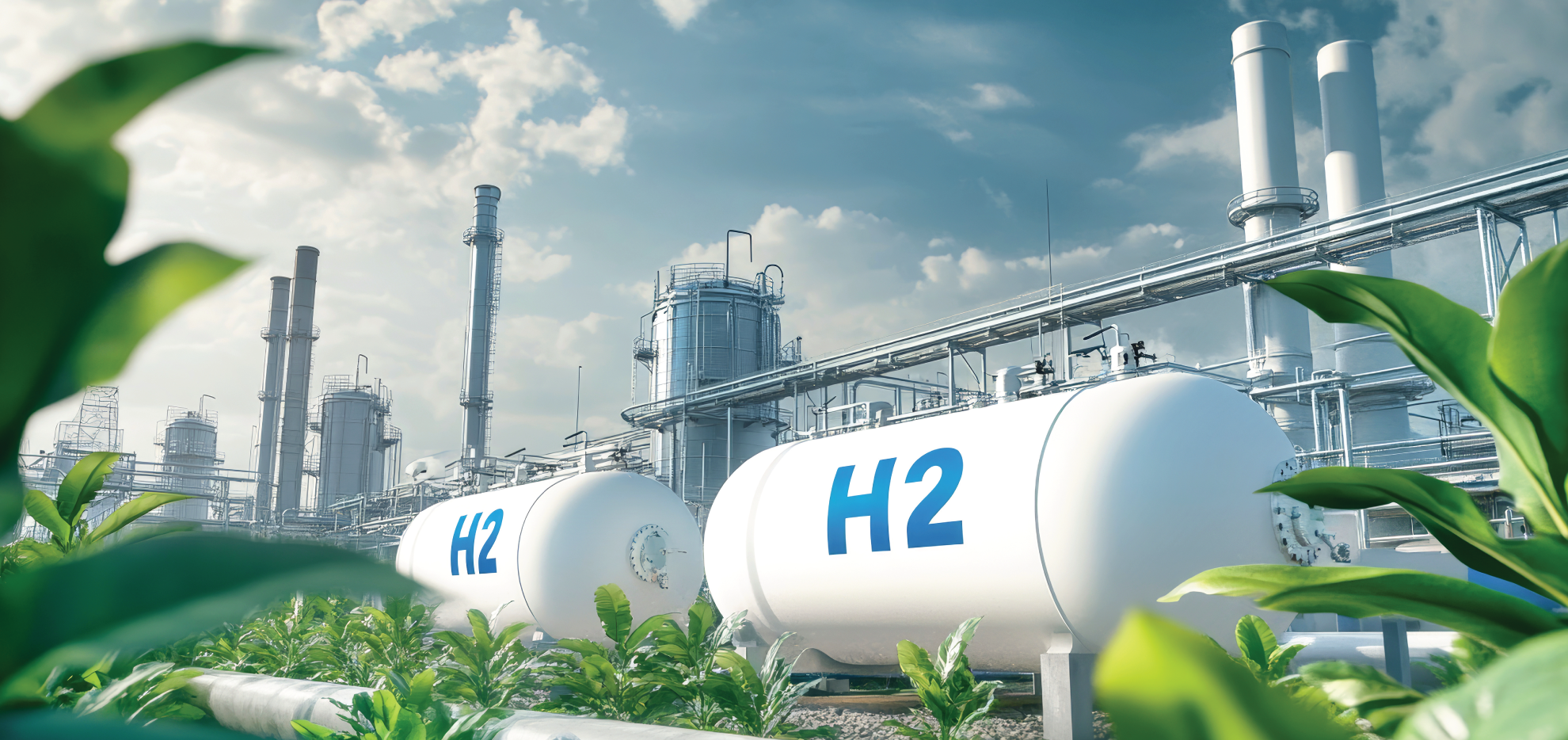Hydrogen Transport, Blending, and Low Carbon Natural Gas: Paving the Way for a Sustainable Future

As the world accelerates toward decarbonisation, hydrogen has emerged as a pivotal element in the global energy transition. Recognised for its potential as a zero-carbon medium, hydrogen promises to substantially reduce reliance on fossil fuels while aiding the achievement of climate targets in various industries. However, integrating hydrogen into the existing energy infrastructure presents both challenges and opportunities—particularly in transport, blending with natural gas, and advancing low-carbon solutions.
The Challenge of Hydrogen Transportation
Unlike conventional hydrocarbons, hydrogen has a lower energy density, necessitating specialised storage and distribution systems. Traditional infrastructure, such as pipelines and compression systems, must be adapted or replaced with costly alternatives designed to handle hydrogen’s unique properties. This is because hydrogen molecules are smaller and more diffusive, requiring materials and systems that can withstand their physical and chemical characteristics.
Despite these challenges, using existing pipeline networks to transport hydrogen remains a promising solution. It offers an economical option for moving large amounts of hydrogen over long distances without requiring massive new capital investments. However, the transition to hydrogen transport presents specific challenges, such as material embrittlement, which must be addressed on a case-by-case basis.
Material embrittlement—where hydrogen atoms diffuse into the metal lattice of pipelines, weakening their structural integrity—is a significant hurdle. Hydrogen can alter metals’ toughness, plasticity, and strength, particularly modern high-strength steels, in a process known as “Internal Hydrogen Embrittlement” and “Hydrogen Environmental Embrittlement.” These issues necessitate rigorous testing and upgrading existing infrastructure to ensure safety and reliability.
Hydrogen Blending: A Pathway to Decarbonisation
Blending hydrogen with natural gas is a strategy gaining momentum globally to lower CO2 emissions without requiring an entirely new distribution network. Current blending ratios range from 5% to 20%, and efforts are ongoing to increase these percentages for greater environmental benefits.
The practice of hydrogen blending offers several advantages. It allows the gradual integration of hydrogen into the energy mix while utilising existing natural gas pipelines. This reduces the need for substantial infrastructure investments and accelerates the transition to cleaner energy. Moreover, hydrogen can complement natural gas by producing a cleaner combustion fuel, cutting CO2 emissions, and enabling using renewable energies on a larger scale.
However, hydrogen blending is not without its challenges. The introduction of hydrogen into natural gas pipelines alters the mechanical characteristics of the metals used in these systems. It can lead to safety concerns, such as increased flammability and the need for more stringent controls throughout the supply chain. Additionally, retrofitting existing infrastructure to handle hydrogen blending presents operational complexities and high costs.
Overcoming Technical and Economic Hurdles
Despite these challenges, hydrogen blending holds immense potential for cutting CO2 emissions and advancing the global shift toward low-carbon energy. A coordinated effort among industry players, governments, and regulators is essential to unlock this potential.
One of the critical barriers to hydrogen blending is its high production cost. Economically viable hydrogen blending will require strong policy support and increased market demand. Governments can play a crucial role in creating a favourable regulatory framework, providing subsidies, and incentivising the development of hydrogen technologies. Collaboration between the public and private sectors is necessary to overcome the economic, technical, and safety hurdles that stand in the way of hydrogen’s widespread adoption.
The Road Ahead: Hydrogen’s Role in a Cleaner Energy Future
The integration of hydrogen into natural gas pipelines represents a significant step toward reducing carbon emissions and fostering a more sustainable energy landscape. At the same time, technical, operational, and safety challenges are still to be overcome; hydrogen transport and blending offer a practical pathway to decarbonising the energy sector.
As hydrogen continues to gain prominence in global energy strategies, its successful adoption will depend on careful planning, infrastructure investments, and policy innovation. Hydrogen could play a transformative role with the proper framework in achieving a cleaner, greener, and more sustainable energy future.





